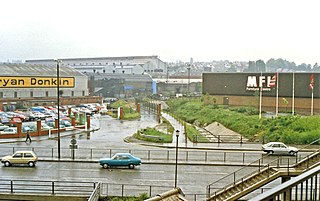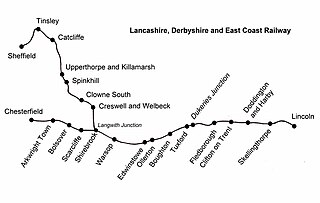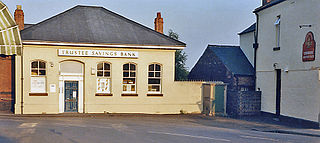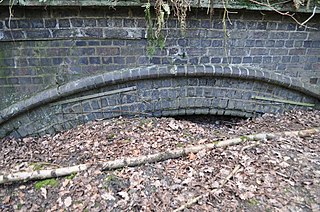
Chesterfield Market Place railway station was a former railway station in the centre of the town of Chesterfield, Derbyshire, England.
The Lancashire, Derbyshire and East Coast Railway (LD&ECR) was built to connect coalfields in Derbyshire and Nottinghamshire with Warrington and a new port on the Lincolnshire coast. It was a huge undertaking, and the company was unable to raise the money to build its line. With the financial help of the Great Eastern Railway it managed to open between Chesterfield and Lincoln with a branch towards Sheffield from 1896. Despite efforts to promote tourist travel, the passenger business was never buoyant, but collieries were connected to the line, at first and in succeeding years. The Great Eastern Railway, and other main line companies, transported coal to the southern counties, and the company's engines took coal to Immingham in great quantities. The company had a fleet of tank engines.

Arkwright Town railway station was in Arkwright Town, Derbyshire, England.

Scarcliffe railway station is a former railway station in Scarcliffe, Derbyshire, England.

Shirebrook North railway station was a railway station serving the town of Shirebrook in Derbyshire, England. It was on the Lancashire, Derbyshire and East Coast Railway running from Chesterfield to Lincoln. The starion was also on the former Shirebrook North to Nottingham Victoria Line and the Sheffield District Railway. The station has since been demolished and housing now occupies parts of the site with some stub rails nearby serving a train scrapper.

Warsop railway station is a former railway station in Market Warsop, Nottinghamshire, England.

Ollerton railway station is a former railway station in Ollerton, Nottinghamshire, England.

Tuxford Central railway station is a former railway station in Tuxford, Nottinghamshire, England.

Clowne South railway station is a former railway station in Clowne, Derbyshire, England.

Dukeries Junction, originally Tuxford Exchange, was a railway station near Tuxford, Nottinghamshire, England. The station opened in 1897 and closed in 1950. It was located at the bridge where the Lancashire, Derbyshire and East Coast Railway crossed over the East Coast Main Line (ECML), with sets of platforms on both lines. The high-level location is now part of the High Marnham Test Track.

Duckmanton Tunnel is a former 501-yard (458-metre) long twin-track railway tunnel between Chesterfield and Arkwright Town in Derbyshire, England.
Boythorpe Viaduct was a railway viaduct in Chesterfield, England.

Duckmanton Junction is a former railway junction near Arkwright Town in Derbyshire, England.

Clowne & Barlborough is a former railway station in Clowne northeast of Chesterfield, Derbyshire, England.

Glapwell is a former railway station in Glapwell, Derbyshire, England.

Rowthorn and Hardwick is a former railway station in Rowthorn, near Glapwell, Derbyshire, England.
The Clowne Branch is a disused railway line in north eastern Derbyshire, England. Which runs from Creswell to Staveley. Historically it ran to Chesterfield. It is now in use as a greenway.
The Doe Lea branch is a mothballed railway line in Derbyshire, England. It connected the Derbyshire towns of Chesterfield, Staveley and Bolsover to the Nottinghamshire town of Mansfield. It also had a branch line to Creswell via the Derbyshire town of Clowne.
Beighton Junction is a set of railway junctions near Beighton on the border between Derbyshire and South Yorkshire, England.
The Beighton Branch was a railway branch line built by the Lancashire, Derbyshire and East Coast Railway (LD&ECR) in north eastern Derbyshire, England.














